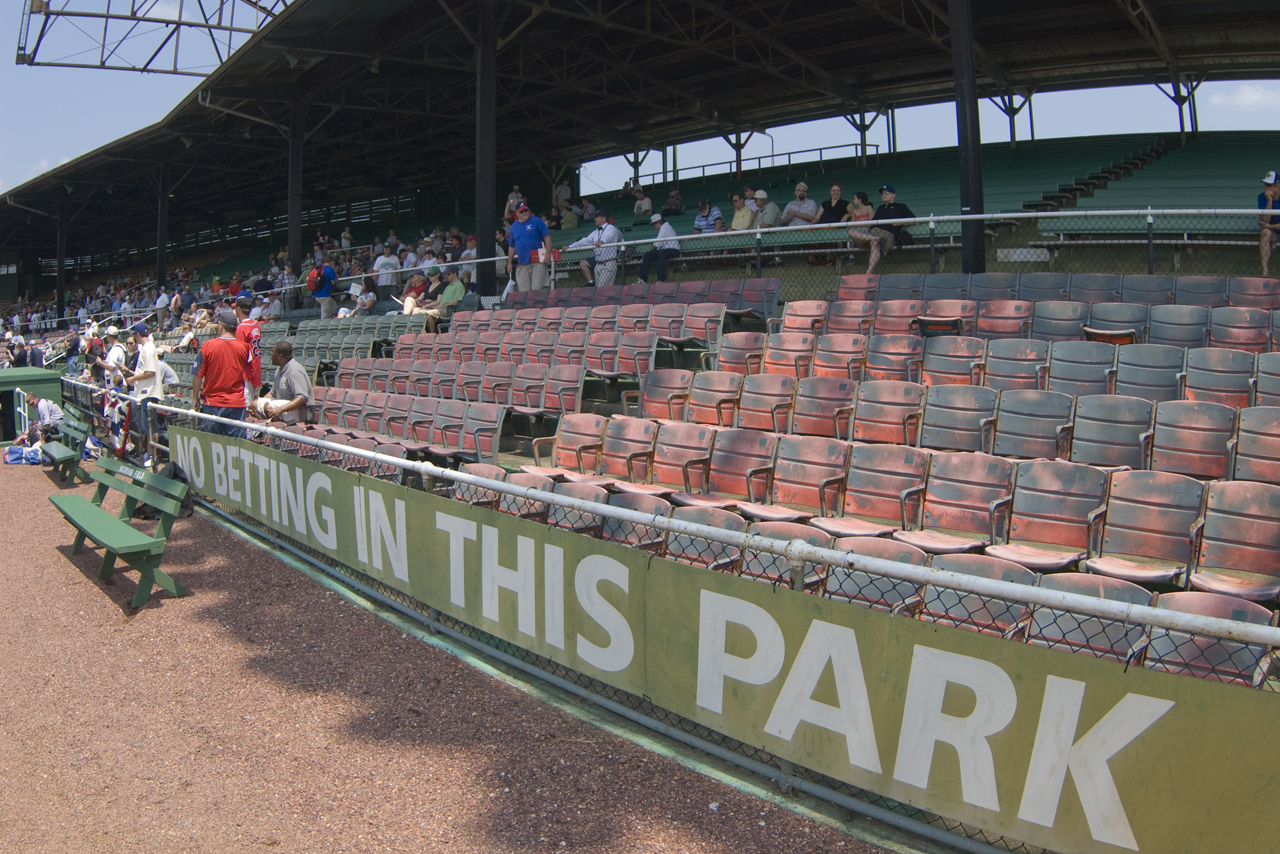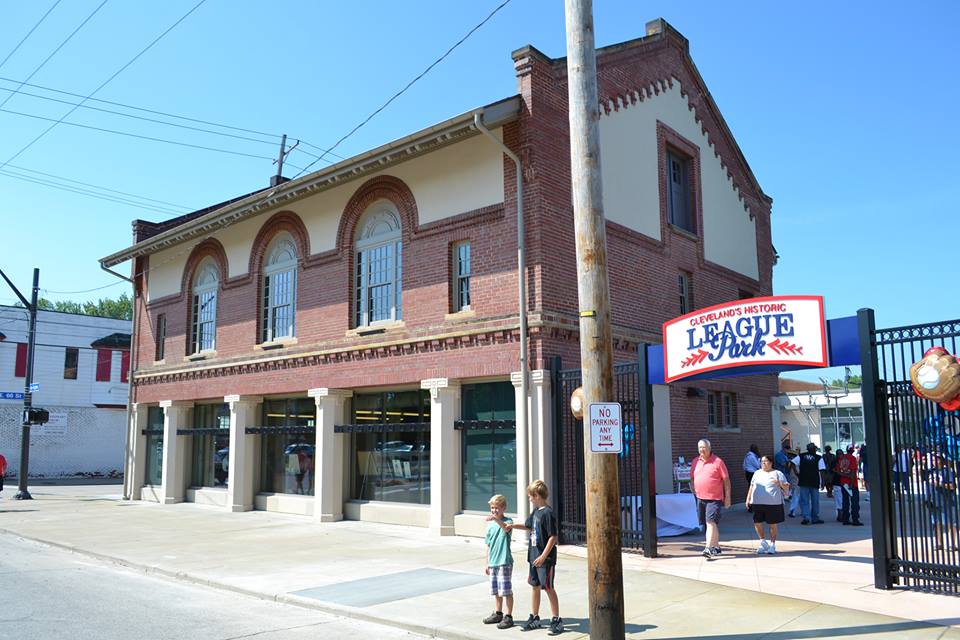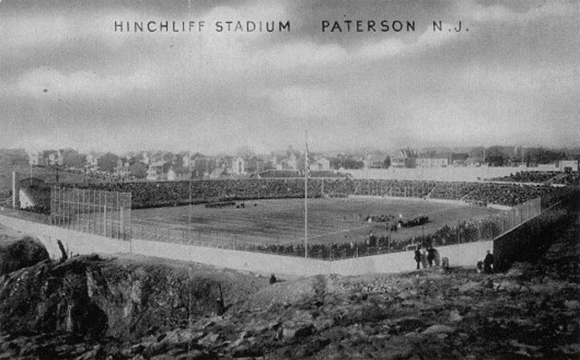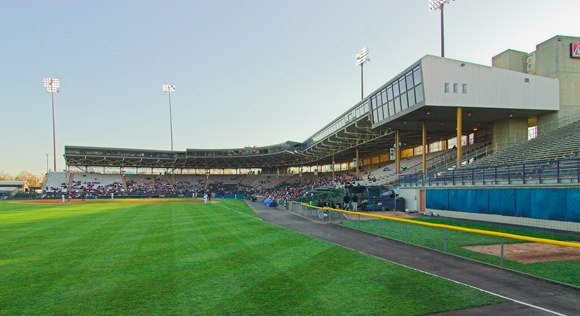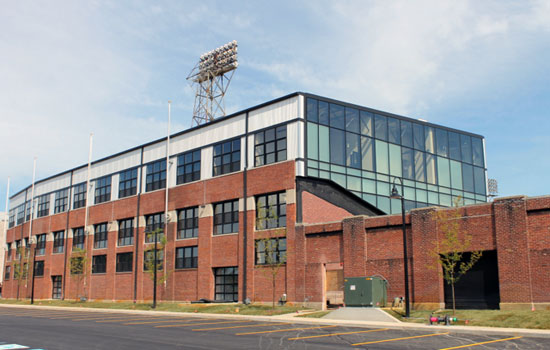One casualty of the 2020 COVID-19 pandemic has been a baseball-wide celebration of the 100th anniversary of the formation of the Negro National League. There are six existing ballparks that formerly hosted Negro Leagues major-league action; here they are.
It was on February 13, 1920 when Rube Foster convened a meeting of eight independent Black baseball team owners at the Paseo YMCA in Kansas City, leading to the formation of the Negro National League and paving the way for the creation of other Negro Leagues, both on a major-league level and a minor-league level.
The anniversary was set to be celebrated in Major League Baseball on June 27, with all 30 teams slated to wear commemorative patches. But with the 2020 season shut down, so will the MLB celebration, though the Negro Leagues Baseball Museum in Kansas City continues to mark the occasion and is likely to do so into 2021.
If the history of the ballparks of the Negro Leagues, six surviving facilities are worth seeking out. Two are in the midst of renovation efforts, one is likely to be demolished in coming years, and three still used for baseball. Here they are:
Rickwood Field, Birmingham, AL
Still going strong at 110 years old, Rickwood Field still hosts baseball as well as the annual Rickwood Classic, hosted by the Southern League’s Birmingham Barons. In 1920, the Birmingham Black Barons became a charter member of the eight-team Negro Southern League and ascended to the Negro American League in 1937. During the 1920s, Birmingham would see future Hall of Famers Leroy “Satchel” Paige, George “Mule” Suttles, and Bill Foster suit up for the Black Barons. During the 1940’s the Black Barons would win three (1940, 1945, 1948) league pennants and produce more future stars of the game including MLB Hall of Famer Willie Mays and Lorenzo “Piper” Davis.
League Park, Cleveland, OH
Baseball was first played at the site of League Park in 1891, when a wooden ballpark opened for the Cleveland Spiders. The original League Park to occupy the site lasted through the 1909 season, when it made way for a new structure that was more reflective of its time. Just as many cities either already had, or were about to do, Cleveland opened a concrete and steel ballpark for its American League franchise—then known as the Cleveland Naps—for the 1910 season. In 1931, Cleveland opened Cleveland Municipal Stadium, a sprawling multi-purpose venue that could accommodate baseball, and for the next several years the Cleveland Indians split time between the facilities. The Cleveland Buckeyes of the Negro American League played there in 1943–1948 and then again in 1950. Much of League Park was torn down in 1951, but a few structures would remain standing over the years, including a ticket house and a grandstand wall running along East 66th Street. Today, those remains anchor a new era of the League Park site, where the history of baseball has been chronicled through a significant project.
Hamtramck Stadium, Hamtramck, MI
In the midst of a restoration effort, Hamtramck Stadium originally opened in 1930 and was home to a variety of Negro Leagues teams, including the Detroit Stars and Detroit Wolves. Funding for the ballpark’s renovation has come from a variety of sources, as the City of Hamtramck has been working with Smith Group JJR on a development plan for Hamtramck Stadium. Built by businessman John Roesink in 1930 as the home of the Stars, the ballpark still exists but isn’t used for baseball; the original grandstand (enhanced in 1940 with WPA money) has been shut off, but the playing field is still used by the local community. However, the flagpole and pitchers’ mound are still there. It’s been a long slog to raise the funds needed for a proper restoration, but work could begin this summer.
Hinchliffe Stadium, Paterson, NJ
Hinchliffe Stadium opened in 1932 and hosted the New York Black Yankees and New York Cubans along the way, but it closed in 1997 and has since fallen into a state of decline. A renovation effort gathered momentum over much of last year, as local officials and developers moved forward with plans to bring the historic ballpark back into working condition for amateur sports as part of a larger $76-million development project that will include a 270-space parking garage, 65-unit senior citizen apartment building that includes a child care center, and a restaurant. The restoration plan does not call for its use as a ballpark, however.
J.P. Small Memorial Stadium, Jacksonville, FL
The former Durkee Field hosted the Negro American League’s Jacksonville Red Caps in two different stints: 1938 and 1941-42. Located in the Durkeeville area of Jacksonville, Durkee Field also hosted minor-league baseball and spring-training games for both MiLB and MLB teams. It had a mixed track record, to be sure. This was where Jacksonville officials refused to let Black and White players take the field at the same time, causing the Montreal Royals to cancel a 1946 game where Jackie Robinson was set to play. Later, however, the ballpark became one of the first integrated ballparks in Minor League Baseball’s South Atlantic League, a move led by Sam Wolfson when he owned the Jacksonville Braves and the likes of Henry Aaron and Felix Mantilla played there. The current J.P. Small Memorial Stadium sports the same steel and brick grandstand as when the Red Caps were a tenant; there are also historical markers and a museum at the site.
Cooper Stadium, Columbus, OH
We’re not talking about a rich and long history of Negro Leagues play at Cooper Stadium, but it did serve as the home of the Columbus Blue Birds of the Negro National League in the first half of 1933. The team did not do well on the field or at the gate (despite the presence of Ted “Double Duty” Radcliffe on the roster) and eventually ended up in Cleveland. Cooper Stadium, better known as the home to Minor League Baseball in Columbus for decades, has been partially demolished and likely to be totally demolished, as the site is tentatively slated for new development.
(As a footnote, Indianapolis’s Bush Stadium still stands, but it’s been converted to housing. It’s still recognizable as a ballpark, but not used for that purpose. Given that more of Bush Stadium remains than does League Park, its inclusion as a Negro Leagues ballpark is certainly debatable.)
In terms of regularly hosting barnstorming Negro Leagues teams or minor-league Negro Leagues teams, many ballparks still stand or partially stand, including Newport’s Cardines Field, St. Joe’s Phil Welch Stadium, Savannah’s Grayson Stadium, Cleveland’s League Park, Havana’s Estadio Gran, Helper’s Ernie Gardner Field, Johnstown’s Point Stadium, Jamestown’s Jack Brown Stadium, Hagerstown’s Municipal Stadium, Columbus’s Golden Park, Macon’s Luther Williams Field, Asheville’s McCormick Field, Bristol’s Muzzy Field, Butler’s Butler Field, Chattanooga’s Engel Stadium, Austin’s Downs Field, Durham’s Durham Athletic Park, Montgomery’s Cramton Bowl, Chicago’s Wrigley Field and Bismarck’s Bismarck Municipal Stadium, and there are undoubtedly more out there.
This article first appeared in the weekly Ballpark Digest newsletter. Are you a subscriber? It’s free, and you’ll see features like this before they appear on the Web. Go here to subscribe to the Ballpark Digest newsletter.
Previous Ballparks That Live on Entries:


